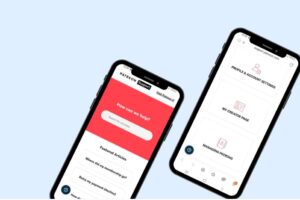The app market is fiercely competitive, and app developers and publishers are constantly striving to generate revenue. In order to achieve ongoing revenue growth, it is crucial to utilize monetization solutions that are based on cohort data analysis, as these solutions not only optimize income streams but also enhance user engagement. This article will delve into the potential of data-driven monetization solutions and their ability to propel app revenue towards unprecedented levels.
The Role of Data-Driven Monetization Solutions
Monetization strategies driven by data revolutionize decision-making processes, offering invaluable insights into pricing models, ad placements, user targeting and more. Developers armed with analytics-driven solutions such as adapty.io can optimize their monetization efforts by increasing user engagement and uncovering untapped revenue streams. Let’s explore the key advantages:
- Capitalizing on data-driven monetization empowers developers to understand user behavior, preferences, and demographics on a profound level. By analyzing user data, developers gain comprehensive knowledge of their target audience. This understanding allows for tailoring monetization strategies that resonate with specific user segments. As a result, users are presented with offers that align seamlessly with their interests, enhancing satisfaction levels.
- Novel pricing strategies hold immense potential for driving app revenue growth. Through data-driven monetization solutions, developers can delve into factors such as user spending patterns, purchase history, and prevailing market trends to unlock optimal pricing models. By comprehending the perceived value of in-app purchases or subscriptions accurately, developers can establish competitive prices that drive conversions and maximize revenue – all while maintaining exceptional user experiences and satisfaction levels.
- Dynamic Ad Placements revolutionize app monetization. To ensure a seamless user experience, developers can utilize data-driven solutions to implement ads that are relevant and perfectly placed based on user behavior and preferences. This targeted approach generates higher revenue while maintaining positive user engagement.
- Ad Performance Optimization is made possible through data-driven solutions. Developers receive real-time insights into ad performance metrics such as impressions, click-through rates, and conversions. Armed with this information, developers can identify underperforming ads and make informed decisions on optimizing placements, formats, or targeting strategies. The result? Maximized ad revenue and improved user engagement.
- A/B Testing and Experimentation empower developers to evaluate different monetization strategies using measurable data. With data-driven monetization solutions at their disposal, they can conduct A/B tests and experiments to compare the performance of alternative approaches. Continuous testing allows for the identification of the most effective tactics, which further drives revenue growth and optimization.
- Utilizing data-driven monetization solutions allows developers to pinpoint the elements that influence user retention and lifetime value. By scrutinizing user behavior, purchase history, and engagement metrics, developers can identify valuable segments of users and apply strategies aimed at retaining them, for example offering tailored incentives, loyalty programs, or exclusive perks for subscription holders. Prioritizing user retention ultimately yields heightened app revenue in the long run.
Implementing Data-Driven Monetization Solutions
For effective implementation of data-driven monetization solutions, developers should adhere to the following best practices:
- Comprehensive Data Collection: Implement strong mechanisms for capturing relevant user data, including app usage, purchase history, and demographic information. Utilize analytics tools or SDKs to ensure accurate and extensive data collection.
- Data Privacy and Compliance: Uphold the highest standards of user data protection and comply with privacy regulations. Adhere to industry best practices and regulations like GDPR or CCPA.
- Analytics and Insights: Harness advanced analytics platforms or solutions to analyze user data, extract valuable insights, and discover opportunities for revenue optimization. Employ dashboards, visualizations, and reporting tools to track key metrics such as RPU (revenue per user), ARPPU (average revenue per paying user), or user churn rates in order to monitor the performance of your monetization strategies and make informed decisions based on data.






![YouTube SEO in 2024 [Definitive Guide]](https://getpixie.com/wp-content/uploads/2024/02/shutterstock_1684828252-1-150x150.jpg)








